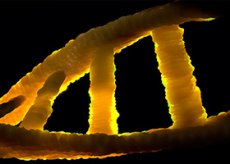New publications
New opportunities for gene therapy in the treatment of paralysis
Last reviewed: 02.07.2025

All iLive content is medically reviewed or fact checked to ensure as much factual accuracy as possible.
We have strict sourcing guidelines and only link to reputable media sites, academic research institutions and, whenever possible, medically peer reviewed studies. Note that the numbers in parentheses ([1], [2], etc.) are clickable links to these studies.
If you feel that any of our content is inaccurate, out-of-date, or otherwise questionable, please select it and press Ctrl + Enter.

Needless to say, what does a person feel when he/she has just been diagnosed with paralysis of the limbs? Almost everyone knows that when a nerve is damaged, it is very difficult, and sometimes impossible, to restore motor or sensory ability. Scientists are encouraging: the picture may change for the better very soon.
Scientists from King's College London and the Netherlands University of Neural Sciences have been able to restore movement to laboratory animals with complete paralysis of the forelimbs.
In the vast majority of cases, when spinal cord structures or neuroconducting pathways are damaged, the main problem in restoring functionality is the formation of scar tissue at the damaged site. In general, the formation of a scar is a normal phenomenon that serves as a protective response of the body. But in some cases, such a reaction becomes unnecessary: for example, when a nerve trunk is damaged, a scar forms much faster than the fusion of nerve tissue occurs.
Today, the main treatment for paralysis is considered to be excision of scar tissue and prevention of scar formation. But such treatment is not possible in all cases.
As described in the pages of the Brain publication, throughout the new study, scientists attempted to “dissolve” scar tissue while simultaneously monitoring the process of scar formation. To accomplish their goal, specialists had to force the surrounding cellular structures to produce chondroitinase, a specific enzyme capable of destroying scar tissue without damaging the quality of the nerve tissue. Surprisingly, the well-known antibacterial drug Doxycycline turned out to be an assistant in the work. Scientists noticed that if the drug was removed or its action was stopped, all scar tissue growths resumed.
After eight weeks of treatment, the laboratory animals were able to fully restore the functionality of their front paws. One of the study's leading researchers, Professor Emily Burnside, says: "At the end of the treatment, the rodents were already able to crawl and take sugar with their front paws. We also recorded an increase in the activity of spinal cord structures. Therefore, we are inclined to believe that the networks of nerve cells formed new connecting pathways."
The researchers did not stop at these results: they developed a method for initiating the production of chondroitinase at the genetic level. A kind of "genetic switch" was created.
"We will be able to establish control over the duration of treatment, select the optimal period of exposure needed for regeneration. Gene therapy will help cure, including serious injuries with damage to spinal structures - and this may require only one injection of the drug. Once recovery is complete, another injection will be given - to turn off the gene."
Of course, there is a fly in the ointment: scientists have not yet received permission to conduct a large-scale clinical trial on patients with paralysis. Therefore, it is necessary to wait for approval from the highest scientific authorities, undergo a series of checks, and only after that will it be possible to declare the possibility of introducing the new method into clinical practice.
The information was published on the pages of the journal Brain.

 [
[